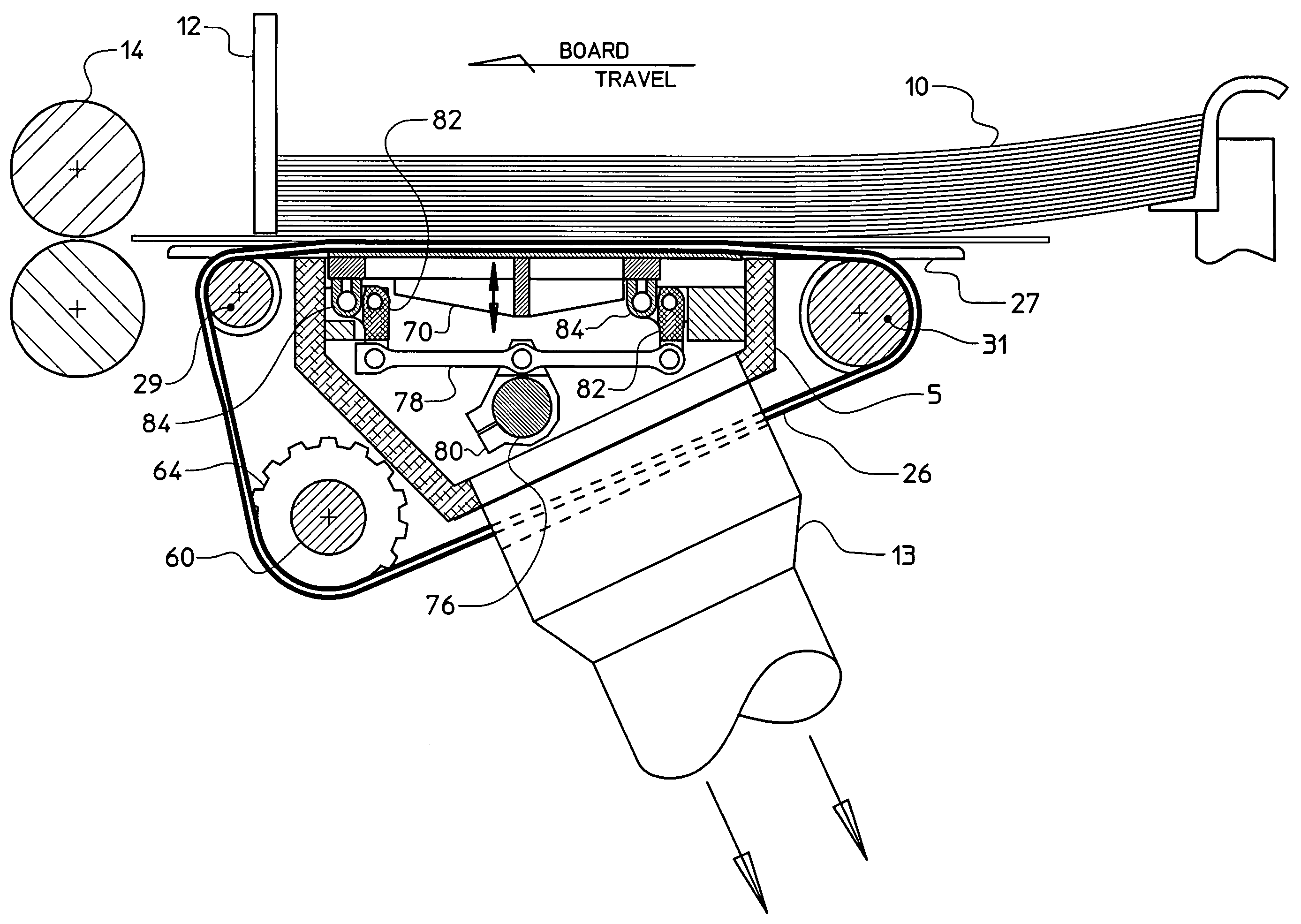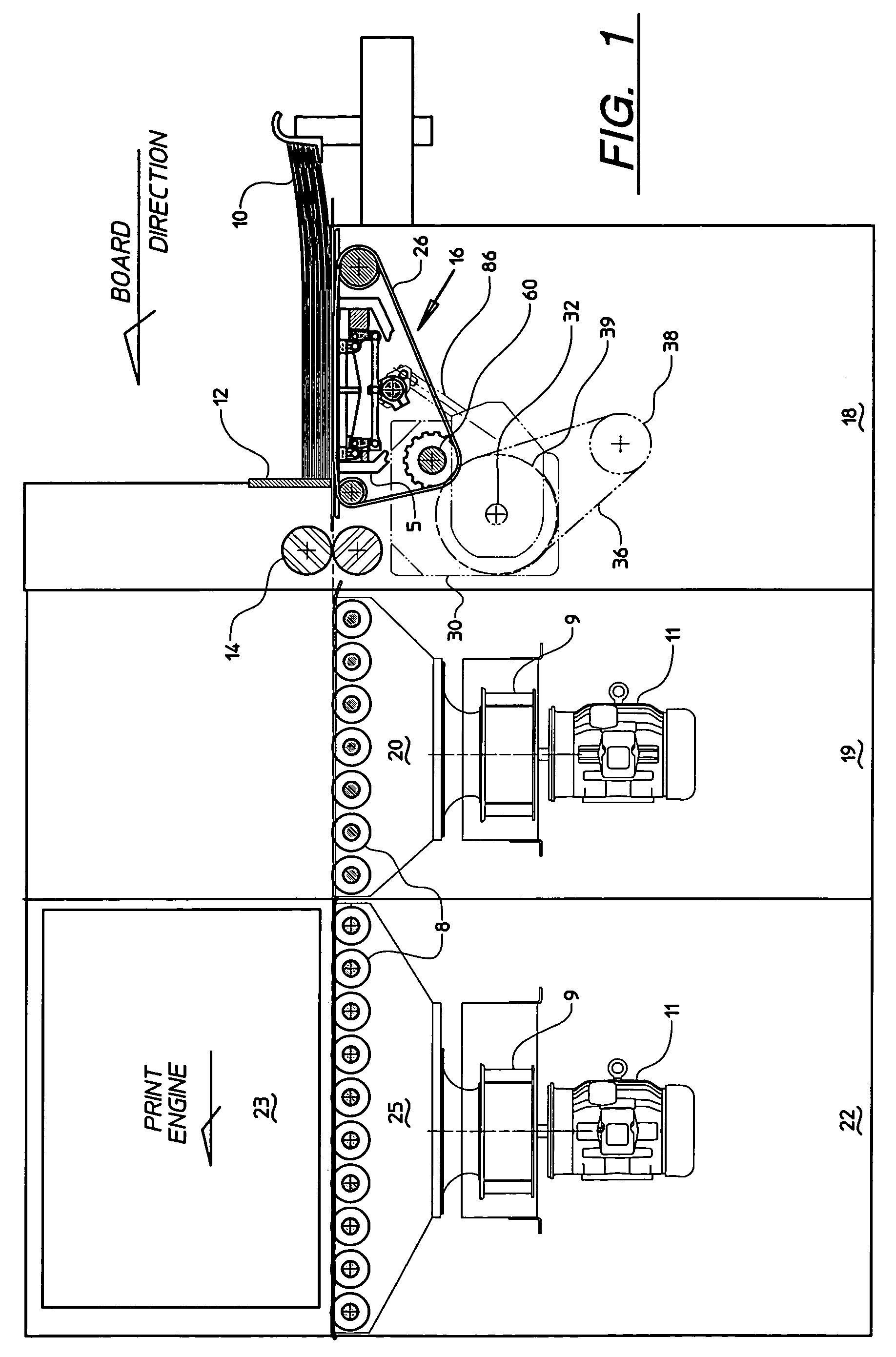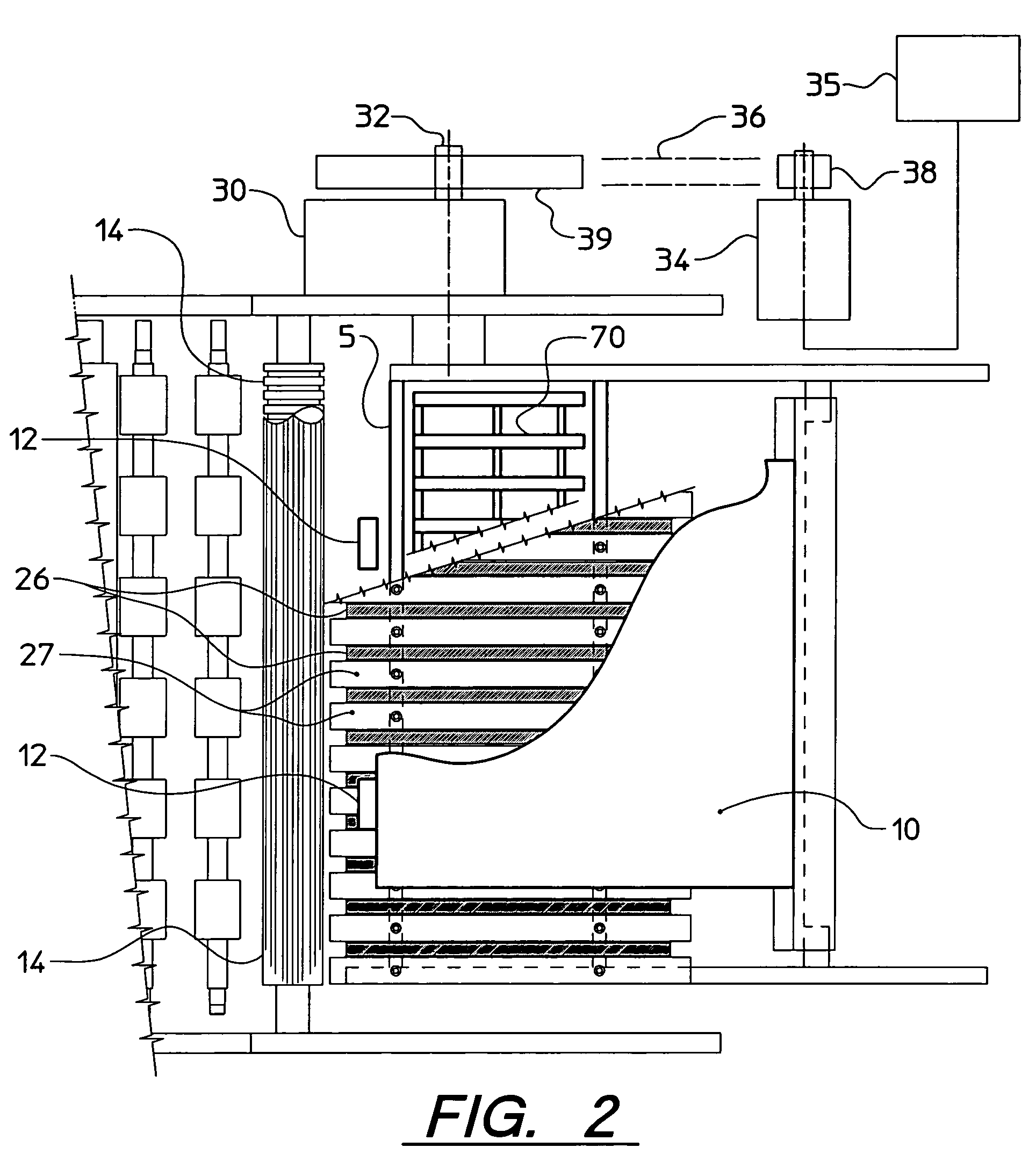Feeder with adjustable time cycle and method
a feeder and adjustable technology, applied in the field of feeders, can solve the problems of loss of vacuum in machines, increase of space between boards, slow down production rate,
- Summary
- Abstract
- Description
- Claims
- Application Information
AI Technical Summary
Benefits of technology
Problems solved by technology
Method used
Image
Examples
Embodiment Construction
[0014]The preferred embodiment of the feeder of the present invention includes an indexing drive mechanism to drive a conveyor or feed member which engages and drives the sheet or board articles downstream of the feeder. During what will be termed herein as the “beta” or “feeding” phase of the indexing drive mechanism, the article is driven a predetermined distance during which the input shaft to the indexing mechanism rotates with constant velocity while the output shaft of the indexing mechanism first accelerates and then decelerates the article. In this phase, when the feeder is used to feed corrugated boards to nip rolls of a box finishing machine, the board is first accelerated to a speed greater than the nip roll speed and then decelerated to the nip roll speed as the board enters the nip rolls.
[0015]During the next phase of the indexing mechanism, which may be termed the “dwell” phase, the output shaft of the indexing mechanism is at zero velocity but the velocity of the inpu...
PUM
 Login to View More
Login to View More Abstract
Description
Claims
Application Information
 Login to View More
Login to View More - R&D
- Intellectual Property
- Life Sciences
- Materials
- Tech Scout
- Unparalleled Data Quality
- Higher Quality Content
- 60% Fewer Hallucinations
Browse by: Latest US Patents, China's latest patents, Technical Efficacy Thesaurus, Application Domain, Technology Topic, Popular Technical Reports.
© 2025 PatSnap. All rights reserved.Legal|Privacy policy|Modern Slavery Act Transparency Statement|Sitemap|About US| Contact US: help@patsnap.com



